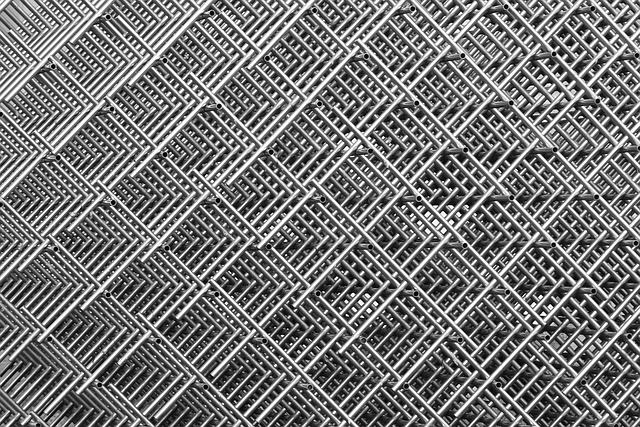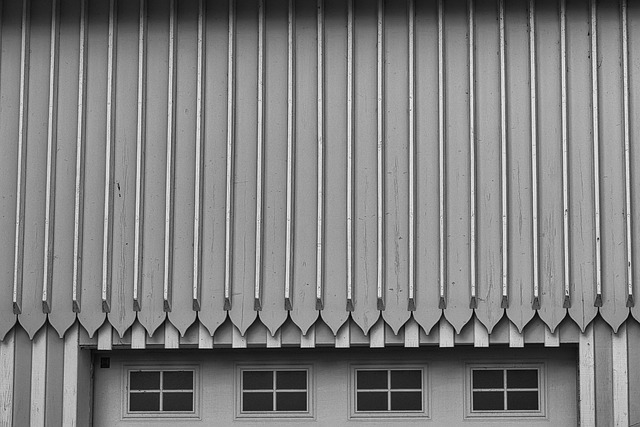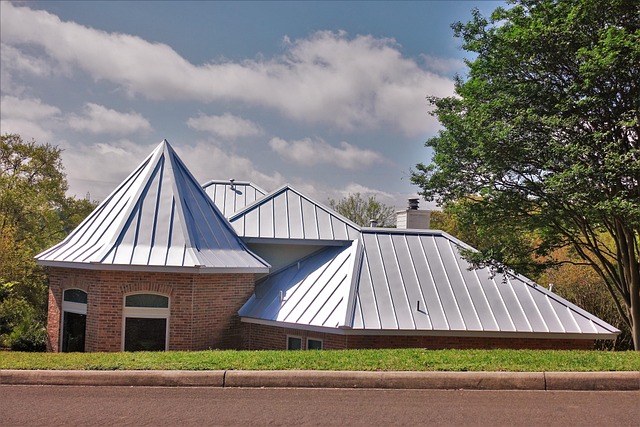Metal roofing has gained popularity due to its superior durability, low maintenance requirements, and visually appealing designs, made from materials like steel, aluminum, or copper. Its resilience against extreme weather conditions and energy-saving reflective surface make it an ideal choice. Expert installation involves knowledge of metal types, proper measurement, cutting, sealing, and drainage to ensure longevity. Choosing experienced local installers with a portfolio of work and positive reviews ensures quality service. Professional installation includes assessing property needs, removing old roofing, installing new panels, flashing, and ventilating for weatherproofing. Regular inspections, cleaning with mild detergent, and avoiding common mistakes like improper flashing and incorrect fastening methods extend the roof's lifespan.
“Elevate your home or commercial property with the durability and aesthetic appeal of metal roofing. This comprehensive guide navigates the world of metal roofing, from understanding its materials and benefits to mastering installation techniques. Discover why it’s a popular choice among experts, offering superior longevity and low maintenance.
We’ll explore the expertise required for quality installation, guide you in choosing trusted local installers, and provide insights into the step-by-step process. Learn how to maintain your metal roof’s health, avoid common installation mistakes, and unlock the full potential of this versatile roofing solution.”
Understanding Metal Roofing: Materials and Benefits

Metal roofing has emerged as a popular choice for many homeowners and commercial property owners alike, thanks to its durability, low maintenance, and aesthetic appeal. Understanding the materials and benefits of metal roofing is essential when considering this option. Metal roofing systems are typically made from high-quality steel, aluminum, or copper, offering a durable and long-lasting solution for any structure.
One of the primary advantages of metal roofing is its exceptional resistance to harsh weather conditions. These materials can withstand extreme temperatures, heavy rainfall, strong winds, and even wildfires, making them an ideal choice for regions prone to such challenges. Additionally, metal roofs are highly reflective, which helps reduce energy costs by minimizing heat absorption, a significant benefit in today’s energy-conscious world. This versatility and efficiency make metal roofing a true game-changer in the roofing industry.
The Expertise Required for Quality Installation

When it comes to metal roofing installation, expertise is paramount. Professionals in this field need a deep understanding of various metal types, their unique properties, and how they interact with different climates. This knowledge ensures that the chosen metal roofing material performs optimally over time, withstanding harsh weather conditions while maintaining its aesthetics and structural integrity.
Beyond material proficiency, expert installers possess honed skills in measurement, cutting, and sealing to guarantee a perfect fit. They are adept at navigating complex roof structures, ensuring proper drainage systems, and adhering to safety standards throughout the installation process. This combination of technical know-how and practical experience translates into lasting results for homeowners, offering peace of mind under every storm cloud.
Choosing the Right Local Metal Roof Installers

When considering metal roofing, choosing the right local installers is a crucial step. Look for professionals with extensive experience in metal roofing installations and repairs. Ensure they are licensed, insured, and bonded to guarantee quality service and protection against any potential damages. Reputable companies often have a portfolio showcasing their previous work, which can give you an idea of their capabilities and attention to detail.
Research local reviews and testimonials from past customers to gauge the installers’ reliability and craftsmanship. Local businesses often understand regional building codes and weather patterns better, ensuring your metal roof meets all safety standards and is suitable for your climate. Selecting a trusted, experienced team can lead to a more seamless installation process and a durable, long-lasting metal roofing system.
Step-by-Step Process of a Professional Installation

A professional metal roof installation is a meticulous process, ensuring longevity and durability for your property. It typically begins with an in-depth assessment to determine the best metal roofing solution for the specific needs of your home or building. The experts will measure the roof’s dimensions, consider slope, and evaluate structural integrity to select the appropriate metal type and gauge.
Once the planning is in place, the installation crew proceeds with precision. This involves removing the old roofing material, preparing the underlayment, and installing flashing and drip edges. Then, the metal panels are cut to size, primed, and secured with powerful fasteners. The process demands skill and attention to detail to ensure proper alignment, sealing, and ventilation, resulting in a robust, weatherproof metal roof.
Maintenance and Longevity: Ensuring Your Metal Roof's Health

Maintaining a metal roof is an essential aspect of ensuring its longevity and keeping your home protected. Unlike traditional roofing materials, metal roofs require minimal upkeep but still need periodic inspection and cleaning to maintain their optimal performance. Regular maintenance can prevent small issues from turning into major problems. Start by inspecting your metal roof for any signs of damage, corrosion, or loose panels at least twice a year. Addressing these issues promptly will keep your roof in excellent condition.
Proper cleaning is another crucial step in maintaining a metal roof. Algae and mold can build up on the surface, leading to aesthetic issues and potential structural damage over time. Use a soft-bristled brush and a mild detergent to gently clean the roof, removing any debris or growth. Avoid harsh chemicals that could harm the metal. Regular maintenance and timely cleaning will contribute to the overall longevity of your metal roofing system, ensuring it stands strong against the elements for many years to come.
Common Mistakes to Avoid During Metal Roof Installation

When installing a metal roof, avoiding common mistakes is essential to ensure longevity and optimal performance. One of the most frequent blunders is improper flashing installation. Flashing is crucial for sealing joints and preventing water intrusion, so it’s vital to follow manufacturer guidelines and industry best practices. Neglecting this step can lead to costly leaks over time.
Another mistake to steer clear of is using the incorrect fastening methods. Metal roofing requires specific fasteners designed to withstand extreme weather conditions. Using inferior or unsuitable fasteners may cause early damage, compromising the roof’s structural integrity. Always opt for high-quality, weather-resistant fasteners suitable for metal roofing applications.
